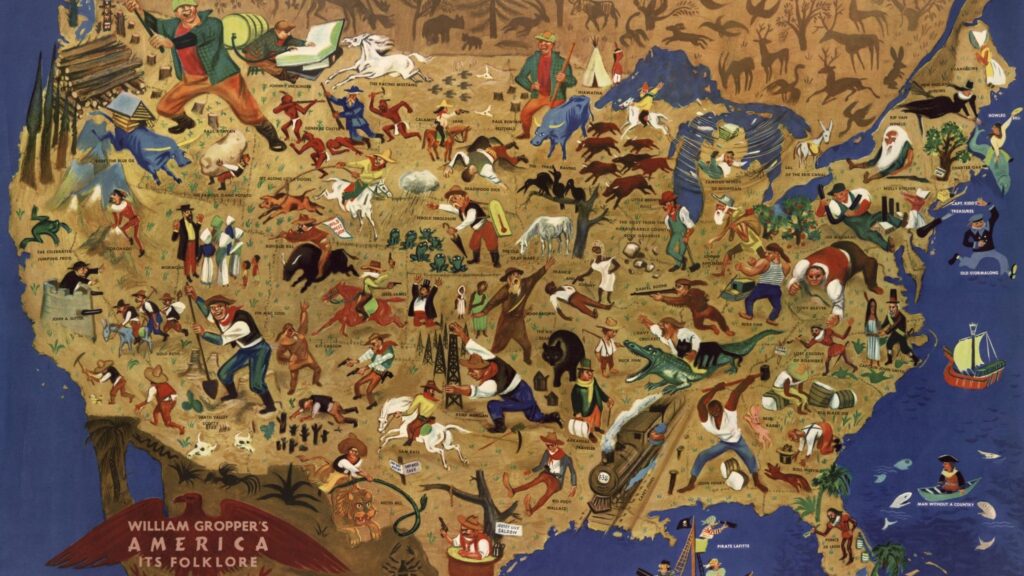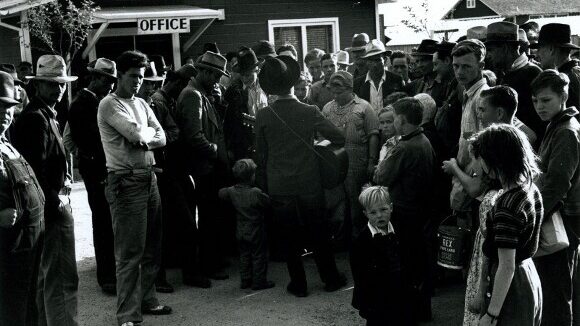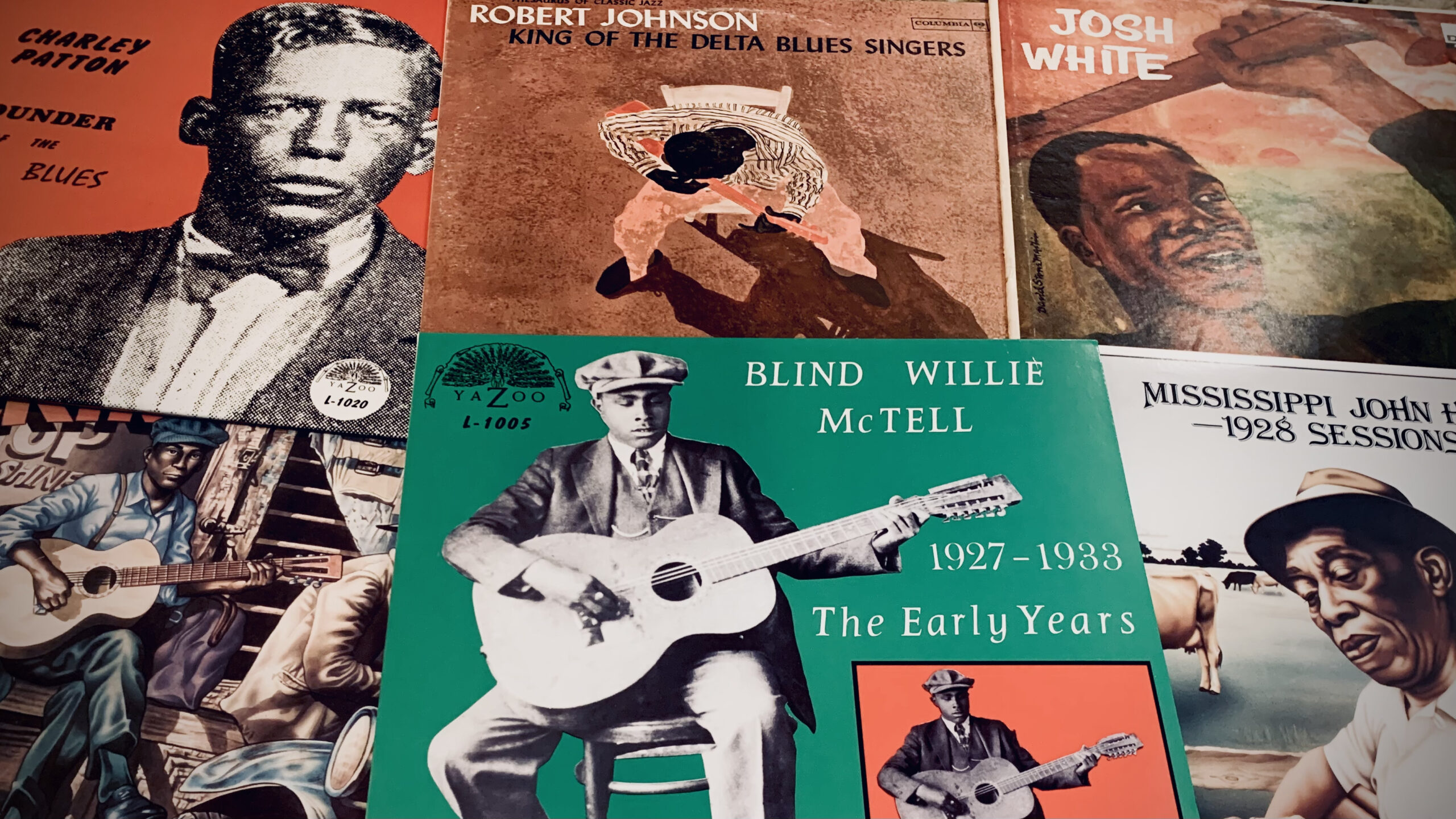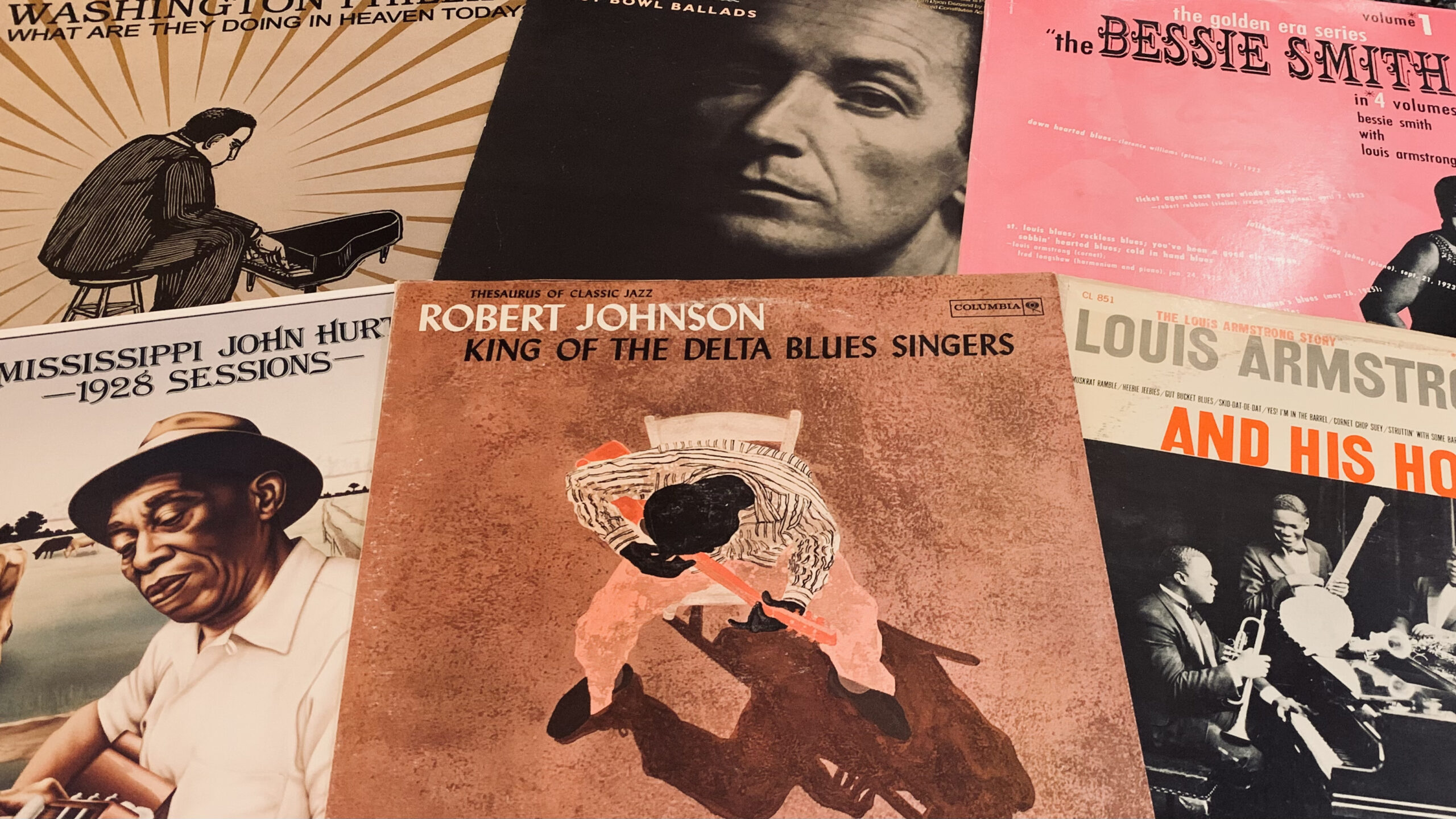
This is the first installment in a three-part series about the music and impact of Harry Smith’s seminal 1952 compilation, Anthology of American Folk Music. Check out Part II and Part III.
Eccentric? Yes. A polymath? Absolutely. Genius? Probably. I’ve seen countless definitions of the latter term, but for me, the one that tracks best is as follows: Genius is found within those who can see and/or present the world in a truly unique manner, but whose singular reflections can still resonate amongst the rest of us. If you adhere to this interpretation of the word, then Harry Smith must surely be considered a genius.
Harry Everett Smith was born in Portland, Oregon in 1923, and spent his youth bouncing around various locations in the Pacific Northwest. Smith’s eccentricity seems to have largely come from his mother, but from both parents, he inherited two things that would define his life’s work: a deep and abounding love for the arts, and a thoroughly working class sense of self – one that came with the requisite work ethic and empathy.
During the Second World War, Smith, now in his late-teens, took a job as a mechanic for Boeing. The money that he earned would largely be spent on two things: enrollment at the University of Washington, where he would study anthropology, particularly focusing on the cultures of indigenous tribes of the Pacific Northwest; and buying 78 rpm records.
Possibly due to his own unique tastes, and possibly due to the wartime ban on record manufacturing, the 78s that Smith purchased were effectively antiques by the early-forties. Beginning with the blues – and eventually moving into folk and “hillbilly” recordings – Smith began amassing a collection that would, in time, become the stuff of legend. This collection would continually follow Smith: first to San Francisco at the conclusion of the war, and then to New York City, after receiving a Guggenheim grant to produce an experimental film.
It was in New York that Smith would meet and befriend Moses Asch, an audio engineer who had recorded the likes of Woody Guthrie and Lead Belly, and the founder of Folkways Records. With his funding running low, Smith proposed selling some of the most prized records in his collection to Asch. Asch responded with a better idea.
The long-player (LP) format was still new when Moe Asch recommended that Harry Smith compile the best of his 78 rpm collection into a multi-volume set, but the idea seemed like it could be an interesting way to breathe new life into old recordings. Unlike, Asch – or contemporaries like Alan Lomax – Smith was more of a curator than a documentarian. As both a visual artist and filmmaker, Smith had displayed immense creativity, but how might one go about creating something new from disparate, pre-existing pieces? Furthermore, was there even an audience for such a project? After all, with America firmly in the grip of a postwar economic boom, modernity was bearing down on the newfound superpower. What relevance would Smith’s collection of dusty old shellac have to the contemporary record buyer?
Nevertheless, Smith pressed ahead with the project. Among the first tasks was to define the parameters of his exploration of American folk music. He chose 1927 as the starting point: coinciding with the advent of electronic recording. The latest work would come from 1932: the point at which the Great Depression severely impacted both the creation and sale of new music. This six-year span would encompass three volumes, each composed of two 33 rpm LPs: Ballads, Social Music, and Songs. When it was released in August 1952, the twelve LP sides of Harry Smith’s Anthology of American Folk Music‘s would house eighty-four songs.
A decidedly rural, southern character looms over virtually every track on the Anthology. Less than a dozen of the collection’s eighty-four songs were recorded by artists who hailed from states that hadn’t been a part of the Confederacy (and a majority of those exceptions were from the border states of Kentucky and West Virginia). As such, the concerns expressed in the tracks largely reflected the rural surroundings of their creators: conditions described in Smith’s liner notes as “mutual social and cultural isolation.” The most notable exceptions were two songs about presidential assassinations, and one about the sinking of the Titanic.
As an outsider – and true to his schooling – Smith took an almost anthropological approach to discussing his subjects in Anthology‘s famous liner notes. Similar to his observations of the culture of the Lummi nation that he studied while attending university, Smith sought to impart a genuine appreciation for the sounds found within Anthology‘s six volumes. Well versed in musical theory, much of Smith’s writing – particularly in the Social Music volume – focused on the rhythmic and melodic complexity of the work that he presented. His observations were insightful, nuanced, and clearly the work of someone entranced by the subject matter. Though the expected audience for the Anthology was largely educated, affluent, northern, and white, nothing in Smith’s loving liners gave anything less than a deferential portrayal of the artistic talent on display throughout. Likewise, Smith’s notes were of a decidedly academic nature: detailing connections to earlier precedents, listing similar songs and “further readings,” and (where appropriate) summarizing the tracks with witty, telegraph/headline style descriptions.
Notably, and perhaps telling of his outsider perspective, Smith made virtually no distinction or separation between Black and white artists. In fact, the only mention of race in the liner notes is a disparaging remark about the continued use of the term “race music.” That’s not to say that the Anthology is presented as a colorblind, or homogenous piece of work. Quite the opposite, in fact, as a small sampling of the material contained within includes old British and Scottish folk songs, Arcadian dance numbers, Black spirituals, Cajun ballads, and hillbilly hoedowns. This pluralistic nature helped in establishing the idea that American folk music was something far more rich and complex than the narrow confines by which it has often been described.
Whether in 1952 or 2022, to listen to Harry Smith’s Anthology is to be transported to Harry Smith’s America. In this first installment of a three-part series, we will examine several tracks from the first volume, Ballads.
Rural America entered the Great Depression well before the rest of the country. The agricultural production that had helped to feed America’s starving allies during the Great War continued unabated, but diminishing international markets after the war led to massive surpluses of farm goods in the 1920s. As production soared, prices plummeted, pushing farmers – particularly sharecroppers and tenant farmers – into financial ruin. These specific concerns are addressed in The Bentley Boys’ 1929 track, “Down on Penny’s Farm” (Disc 2/Track 11):
Now you move out on Penny’s farm
Plant a little crop of ‘bacco and a little crop of corn
He’ll come around to see, gonna plan and plot
Till he gets himself a mortgage on everything you got
Hasn’t George Penny got a flattering mouth
Move you to the country in a little log house
Got no windows but cracks in the wall
He’ll work you all summer and rob you in the fall
You go in the fields and you work all day
Way into the night but you get no pay
Promise you meat or a little lard
It’s hard to be a renter on Penny’s farm
It’s hard times in the country
Out on Penny’s farm
Competing against man was one thing, but a recurring theme throughout the Anthology is the existential threat posed by the modern technology that was rapidly descending upon contemporary America. While much of the rural part of the country was yet to even be electrified, the omnipresent influence of the city can be found looming overhead. Though it references a much earlier technological threat, perhaps the best example can be found in “Peg and Awl” (D1/T12), a 1928 track by The Carolina Tar Heels:
They’ve invented a new machine
Prettiest little thing you ever seen
Throw away my pegs, my pegs, my pegs, my awl
Make one hundred pair to my one
Peggin’ shoes, it ain’t no fun
Throw away my pegs, my pegs, my pegs, my awl
And if the threat of machine and fellow man weren’t already enough, there was also the perpetual concern of nature. While the peak of the Dust Bowl was still a few years away, southern cotton farmers of the 1920s had a formidable foe on their hands in the notorious boll weevil. In 1929’s “Mississippi Boweavil Blues” (D2/T12), Charley Patton (credited here as “The Masked Marvel”) laments the hardship brought on by the pest:
Well, I saw the bo weevil, Lord a-circle in the air
Next time I seed him, Lord, he had his family there
Bo weevil told the farmer that “I ’tain’t got ticket fare”
Sucks all the blossom and leave your hedges square
Contrasting with common perceptions and depictions, the rural America of Harry Smith’s Ballads was anything but bucolic. Scattered across these two LPs are several songs of a tragic, and often graphically violent nature. The set’s opening track, Dick Justice’s 1932 recording of “Henry Lee” (D1/T1), recasts the Scottish ballad, “Young Hunting,” and establishes several recurring themes of the Anthology, including forsaken love, jealousy, and murder:
She leaned herself against a fence
Just for a kiss or two
With a little pen-knife held in her hand
She plugged him through and through
Come all you ladies in the town
A secret for me keep
With a diamond ring held on my hand
I never will forsake
Some take him by his lily-white hand
Some take him by his feet
We’ll throw him in this deep, deep well
More than one hundred feet
Lie there, lie there, loving Henry Lee
‘Til the flesh drops from your bones
The girl you have in that merry green land
Still waits for your return
Even more harrowing is the tale told in Buell Kazee’s 1928 amalgamation of two 18th century British folk songs. “The Butcher’s Boy” (D1/T6) expands its focus to the collateral damage of a tragic love triangle – namely the parents left behind to grieve over their daughter’s suicide:
Her father he came in from work
And said, “Where’s daughter? She seems so hurt”
He went upstairs to give her hope
But found her hanging on a rope
He took his knife and cut her down
And in her bosom these words he found:
“Go dig my grave both wide and deep
Place a marble slab at my head and feet
And over my coffin place a snow-white dove
To warn this world that I died for love“
While some of the violence and tragedy found within these tracks comes off as little more than voyeuristic, there is an intensely moralistic quality to many of these Ballads. Often, they depict a struggle between good and evil, and in particular, focus on the ability of the latter to corrupt the former. Take for instance Clarence Ashley’s classic 1930 retelling of “The House Carpenter” (D1/T3), which casts aside the mystic elements of its original Scottish version (“The Daemon Lover”), to serve as a warning to young wives and mothers to forsake the advances of nefarious suitors. Or, perhaps Nelstone’s Hawaiians’ “Fatal Flower Garden” (D1/T2), which trades the shocking anti-Semitism of the original 18th century song, “Sir Hugh,” for slightly less blunt anti-Romani sentiment, in order to provide a cautionary tale to young children. Unsurprisingly, the penalties in both songs are death.
Beyond repurposing European folk tales for an American palate, several tracks from Ballads helped to popularize homegrown legends as well. In addition to songs about American folk heroes and anti-heroes like John Henry (Williamson Brothers and Curry’s “Gonna Die With My Hammer in My Hand” (D2/T4)), Casey Jones (Furry Lewis’ “Kassie Jones” (D2/T10)), and “Stagger” Lee Shelton (Frank Hutchinson’s “Stackalee” (D2/T5)), Ballads includes one bonafide classic in this mode. Mississippi John Hurt’s “Frankie” (D2/T7) is the finest retelling of the infamous “Frankie and Johnny” saga, and it single-handedly revived interest in the long-forgotten bluesman when the Anthology was released in 1952.
Of course, one of the things that makes Anthology (even the often-heavy Ballads) quintessentially American is a good old fashioned dose of self-deprecating humor. Based on this metric, no track in the opening volume of the Anthology can quite match “Drunkard’s Special” (D1/T4), the A-side to a 1930 single by Coley Jones. In it, the Texas singer/guitarist adapts an old song of Irish origin to a rural American setting: one in which its protagonist is continually taken for a fool by his adulteress wife, but never seems to disprove her estimations of him by song’s end.
Over the years, many listeners have speculated that Ballads was deliberately sequenced by Harry Smith to create something of a narrative about the hardships of rural life in the late-twenties/early-thirties. If this is true, then Smith’s decision to end the volume with The Carolina Tar Heels’ “Got the Farm Land Blues” (D2/T13) is particularly telling. The narrator of the song has reached a point of exasperation – beset by poachers, storms, and the cursed boll weevil. By track’s end, he’s had enough:
Gonna sell my farm, gonna move to town
Gonna sell my farm, gonna move to town
Got the farm land blues, right now
Ultimately, it seems little more than an empty threat. After all, by the time that the song was recorded in 1930, no one was going to buy that farm. For all of its faults, the rural America that Harry Smith presents on Ballads is a thoroughly fascinating place, and as hard as it was to live there in the early years of the Great Depression, it would have been even harder to leave it behind. We’ll see how its inhabitants learned to cope in the next installment.




